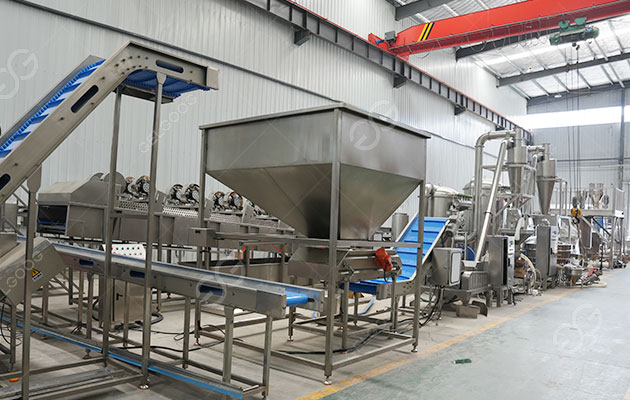Banana powder is a versatile and nutritious ingredient that can be used in a wide range of food products, from smoothies and baked goods to baby food and dietary supplements. If you’re interested in setting up a banana powder manufacturing factory, here’s a comprehensive guide to help you get started.
- Sourcing the Bananas
The first step in manufacturing banana powder is to source high-quality bananas. Look for ripe, organic bananas that are free from blemishes and bruises. The best varieties for powder production are usually Cavendish bananas, as they have a consistent texture and flavor. Establish relationships with reliable banana suppliers to ensure a steady supply of raw materials.
- Washing and Peeling
Once the bananas are delivered to the factory, they need to be thoroughly washed to remove any dirt, pesticides, or contaminants. Use a food-grade washing system to ensure the bananas are clean. After washing, the bananas must be peeled. This can be done manually or with the help of specialized peeling machines. Peeling machines are more efficient and can handle large volumes of bananas quickly, which is essential for industrial production.

- Slicing and Drying
The next step is to slice the bananas into thin, even pieces. This can be achieved using a banana slicing machine or a similar device. The thinner the slices, the faster and more evenly they will dry. Once the bananas are sliced, they are ready for the drying process. There are several methods of drying bananas, but the most common ones used in factories are hot air drying and freeze-drying.
Hot Air Drying
Hot air drying involves placing the banana slices on trays and putting them into a drying chamber. The chamber is heated to a temperature of around 50 to 60 degrees Celsius. The hot air circulates around the banana slices, evaporating the moisture content. This process usually takes several hours, depending on the thickness of the slices and the humidity levels in the drying chamber. Hot air drying is cost-effective and suitable for large-scale production.
Freeze-Drying
Freeze-drying is a more advanced method that involves freezing the banana slices and then placing them in a vacuum chamber. The moisture in the bananas is then sublimated, turning directly from ice to vapor. This method preserves the nutritional content and flavor of the bananas better than hot air drying. However, it is also more expensive and requires specialized equipment.
- Grinding
After the banana slices are thoroughly dried, they need to be ground into a fine powder. This can be done using a hammer mill or a ball mill. The grinding process should be carefully controlled to ensure that the powder is of uniform consistency. The resulting banana powder should be fine and free-flowing.
- Quality Control
Quality control is a crucial step in banana powder manufacturing. The powder should be tested for moisture content, nutritional value, and the presence of any contaminants. It is also important to ensure that the powder has a consistent color and flavor. Regular quality control checks will help you maintain high standards and produce a product that meets customer expectations.
- Packaging
The final step in the manufacturing process is packaging. Banana powder should be packaged in airtight containers to protect it from moisture and air exposure. Common packaging options include plastic jars, resealable bags, and aluminum foil pouches. The packaging should be labeled with the product name, nutritional information, and usage instructions.
Conclusion
Manufacturing banana powder in a factory involves several steps, from sourcing the bananas to packaging the final product. By following these steps and paying close attention to quality control, you can produce a high-quality banana powder that is both nutritious and versatile. Whether you are aiming to supply the food industry or create a unique product for consumers, banana powder manufacturing can be a rewarding and profitable venture.